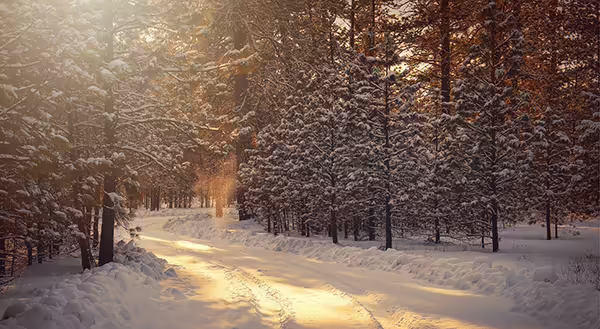
Extreme winter cold is something that can keep gardeners up at night. Since plants are dormant, there is little we can do in the way of plant health care and that can be a real helpless feeling. The extremely cold weather back in December certainly raised concern and my office received a number of calls from worried gardeners.
USDA Cold Hardiness Zones
To put our recent cold snap in perspective, it helps to consider the United States Department of Agriculture (USDA) Cold Hardiness Zone designations and what they really mean in terms of temperature. These cold hardiness zones are geographic designations based on the lowest temperature recorded in wintertime for a given area. Each Zone represents 10 degrees in difference between the ultimate winter low temperature.
Over the years as our weather data set has shifted, these zones have shifted slightly as well. So, they’re designations that are somewhat in flux over time as long-term changes to our climate modify the geographic distribution of the ultimate winter low temperatures. As the cold hardiness zone map has been updated in recent decades, the trend is toward warmer winter low temps, with the line between zones slowly marching northward. As global warming continues to intensify in coming decades, these lines are predicted to continue a northward march.
Changes in Zone Maps
Central Illinois lies near the boundary between Zone 5 and 6 (Click here for an interactive map). In the next 20 years. Zone 6 is predicted to expand northward and into Wisconsin as our climate warms. Models based on our current level of high emissions, assuming we cannot curb emissions of fossil fuels, predict that Zone 5 will be far into Canada in 50 years, meaning the line we currently sit on, between Zone 5 and 6 will wind up north of the Canadian border by 2070. USDA has an information-packed website that illustrates these data, called Climate Change Pressure in the 21st Century.
For the time being, we are in Zone 5 or maybe Zone 6 if you live south of Route 36 or so. Areas that fall within Zone 5 experience an all-time winter low that can reach -10 to -20°F, whereas Zone 6 only approaches 0 to -10°F.
At Willard Airport in Champaign, the lowest temperature in December was recorded overnight on December 23 at -9°F (For more past weather data, visit this NOAA website). This temperature nearly reaches the lowest temp possible for Zone 6, but its well above the potential low for Zone 5. It’s important to keep in mind that the lower limit of each Zone represents the all-time low. So, we shouldn’t expect to approach that temperature often, but winter lows may get close from time to time.
Find Zone Designations for Specific Plants
For gardeners, cold hardiness zones are used to select plants suited to our area. This information is commonly displayed on plant tags or there are a variety of wonderful online resources to help track down the relevant Zone(s) for your plants. A few favorites of mine are the Missouri Botanical Garden Plant Finder and the Morton Arboretum plant database.
Gardening Considerations for Extreme Cold
When folks are concerned about their plants during cold snaps, it helps to consider the expected low temperature for our area and remember that plants adapted to Zone 5 can usually handle it. I typically don’t worry about healthy plants that are adapted to the local Cold Hardiness Zone. However, I do become concerned when plants are suffering from environmental stress or a pest or disease that was noted during the growing season, even if they are well-adapted to our Zone.
Newly planted specimens can also raise concern since the soil in their planting hole can sometimes contain pockets of air before it has time to completely settle. This can allow cold air to filter down into the soil profile and damage root tissue. Snow cover actually provides some protection when compared to bare soil, but a nice layer of mulch (4-6” deep) is perhaps the best overall precaution.
Many plant’s adaptability will span multiple cold hardiness zones, but I tend to worry more about plants that will only tolerate temps as far north as Zone 5. Many times, they may not show much sign of stress in the growing season but die overwinter unexpectedly.
Japanese maple (Acer palmatum) is one great example of a plant that may really suffer as temperatures dip after a seemingly normal appearance during the growing season. I often consider replanting with more cold tolerant species. I know that doesn’t help much when your mature Japanese maple doesn’t leaf out in spring, but Cold Hardiness Zones are definitely worth noting as you replace your maple. It pays to try and find a replacement with Zone 5 as its sweet spot, as opposed to its most northern extent.